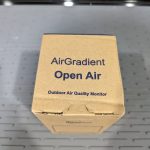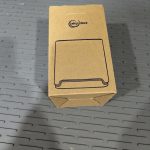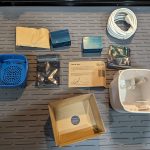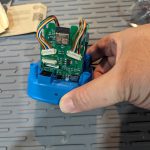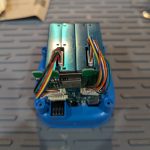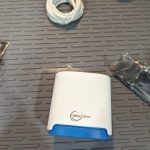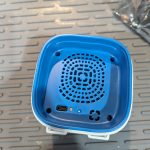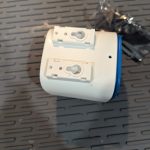Much to my surprise, right after I ordered the kit, which included 2 PMS5003T particulate sensors, and added an SGP40 NOx and VOC sensor, they stopped selling the kit I purchased. The new version bundles the SGP40 and instead of a second PMS5003T, a SenseAir S8 NDIR CO2 sensor.
The interesting thing about having an S8 and an SGP40 outside is that they are not measuring what you want them to measure per se. The CO2 sensor isn’t sensitive enough to measure exact CO2 in the atmosphere, better suited for inside, but like inside, elevated CO2 levels indicate other things.
So, to the device…I was able to easily assemble it in only a few minutes. Then came the software. By default, AirGradient loads it up with their own software that hooks up to their own dashboard. I loaded ESPHome on instead. Fortunately, multiple enthusiasts had configuration files for ESPHome, so it was set up in record time and reporting data, and mounted outside. With the air vents on the bottom, instead of my version, on the side, it should hopefully be resistant to the weather.
This was an incredibly simple build, supports customizable firmware, and was integrated into my Home Assistant and WeeWX installation just as quickly. I am already planning to purchase additional units for future projects.

